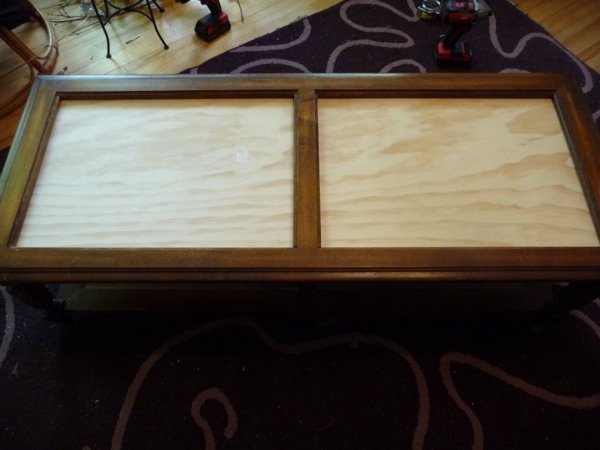Lately, I’ve been reading a lot about minimalism, both from Everett Bogue and Tammy Strobel and also from the book, Your Money or Your Life. I’ve been meaning to do this for a while, but I’ve been a little more inspired lately. This week Michelle and I are going to do some serious paring back of our possessions by purging some of the stuff out of our life that’s been sitting around for too long without getting much use. The hardest part for me won’t be the attachment to the objects themselves, but in actually getting them out of the house. I still feel a lot of the items have some value to somebody, so I’ll be more challenged by holding onto stuff for too long trying to find the perfect home for stuff rather than just getting rid of it.
Wish us luck!
To make a long story short, our old coffee table just plain tuckered out. Michelle had acquired it several roommates ago and its utility finally ceased to be. Its replacement was a coffee table I acquired two sets of roommates ago. It is sturdy and it looks nice, but it’s been sitting in disuse for a long time now, because the last time I moved we forgot to bring with the glass inserts that make up the majority of the table’s surface. Upon the death of the old coffee table, it has become clear that a revival project of sorts has been needed to bring this table back into use. So behold, the mosaic coffee table project has commenced. It is a combination of three loves: My love of building and construction, Michelle’s budding love for mosaics, and our mutual love for coffee tables and all their foot and feet holding splendor.
The project is a very simple one. This post will document the construction part of the project, and in the near future we will revisit this project to cover the mosaic making process. The materials we used were a small sheet of plywood 48” x 18” to fit the size of our table and 12′ of a small rectangular molding, both gathered from Home Depot for not much of a fee. We used a jigsaw to cut the plywood to the proper length and width. Then we cut out notches to allow relief for the legs of the table. We felt that it was a little weak to just screw directly through the plywood so we added some rectangular molding to the project. It allowed us to fasten both into the top and sides of the coffee table as can be seen in the pictures below. The molding adds the advantage of being tied into 2 different planes per side, but it also allows the distribution of the loads placed on each screw heads and like a washer helps prevent the screws from being pulled through the plywood if a heavy load is placed on it.
To be continued…
And may your days be filled with peace and gratitude.







 Hi, I'm Nathan Maus and I'm striving to take full responsibility for creating the world I want to live in. I created this website to share with you what I've learned.
Hi, I'm Nathan Maus and I'm striving to take full responsibility for creating the world I want to live in. I created this website to share with you what I've learned.




